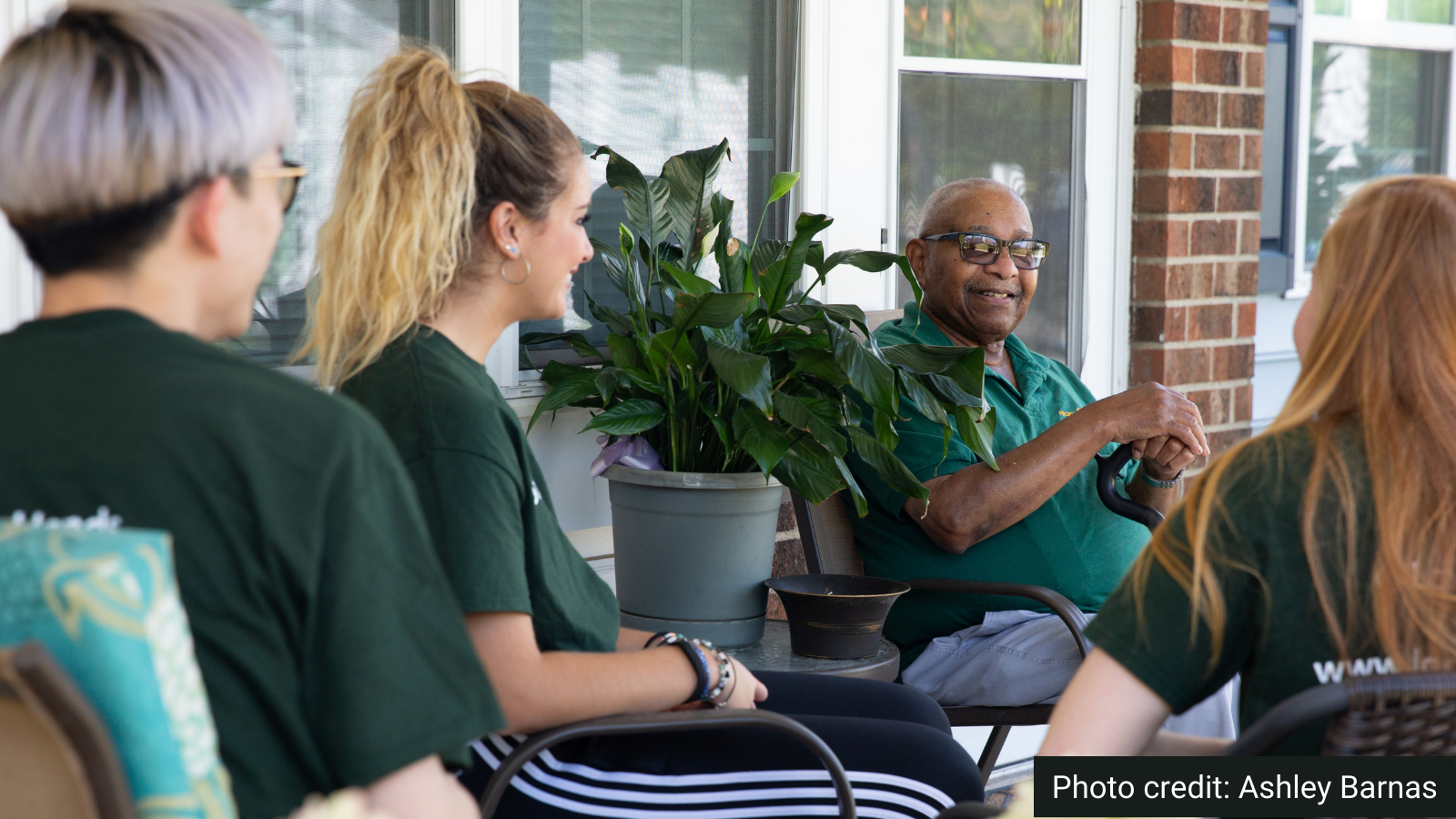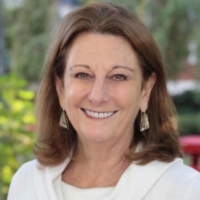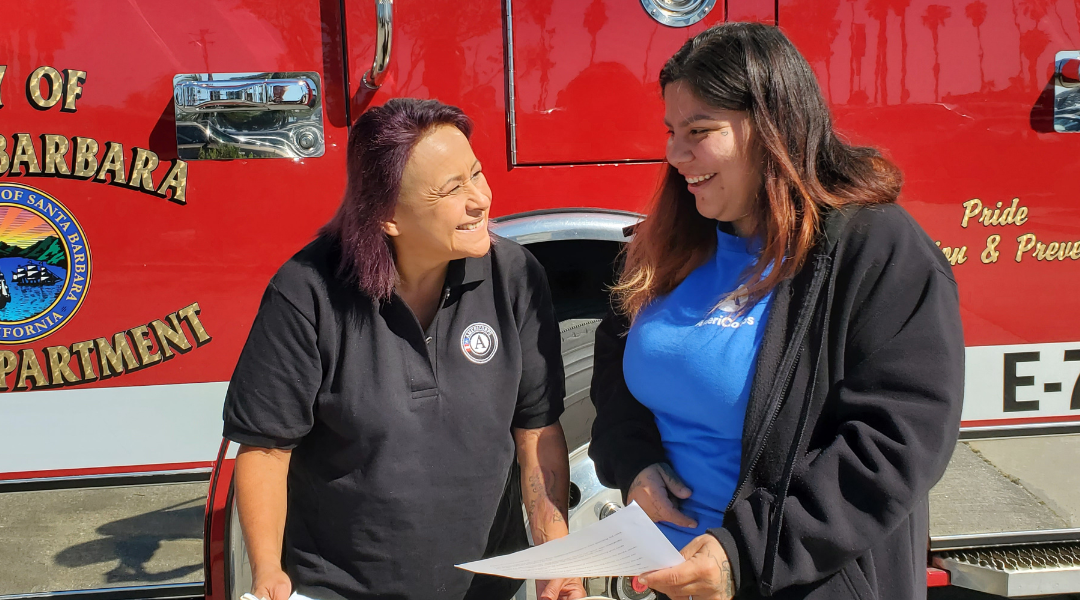
Lori’s Hands, founded by Innovation Fellow Sarah LaFave, creates mutually beneficial partnerships between college students interested in health care careers and community members with chronic illness striving for improved wellbeing and independence.
“Generation Z is desperate to change the world we’ve inherited,” an undergraduate said. “When will older leaders get out of the way?”

N.J. Pierce
That question prompted N.J. Pierce — an experienced management consultant and Fellow at Harvard’s Advanced Leadership Initiative — to ask another one: Do the elders have to step aside for the young to step up, or can we find a way to work together?
To find answers, Pierce helped form Campus CoGenerate, a partnership between CoGenerate and Campus Compact. The two organizations asked people working on intergenerational projects on college campuses to get in touch, hoping to get a few dozen responses. Within the first 24 hours they heard back from 150 people! A third were already engaged in some form of intergenerational work and the rest wanted to get involved and learn more.
Pierce interviewed dozens of them and wrote a paper, The Power and Promise of Intergenerational Collaboration. We spoke with her recently to find out what she learned.
Are campuses natural sites for intergenerational collaboration?
What makes them good, of course, is that they’re typically in a community with people of all ages — students, administrators, professors, and community members, including a growing number of older people choosing to live near colleges — and they have access to one another.
Campuses are naturally intergenerational, but they’re not set up for true collaboration across age for three reasons. First, the power structure. A faculty member can make or break a student’s career. Second, the impermanence of the student body. Students come and go, which tends to entrench the power structure. And third, funding. Historically, funders of intergenerational programs, including those occurring on campuses, are primarily interested in supporting the students or the elders, not necessarily the interactions between them or the program’s benefits for both groups.
What are some of the obstacles to bridging the age divide, on campus or anywhere?
There are gaps in perspective that need to be taken into account. Younger people have this sense that their entire lives are ahead of them and that older people have already lived their lives and should get out of the way. Elders don’t feel the gap in the same way. They believe they have more to give. I think we’ll always have a little bit of that tension.
There’s a trust gap. Many young people attribute today’s challenges to the failures of prior generations. They’re not ready to listen to those they blame. Older people have to learn that you don’t get to share your wisdom just because you want to. You engage, and then if your wisdom is useful, you will be asked for it.
And there’s a gap in attitudes based on age. I was a computer science major in the 1970s, just a solid nerd. Given the times, I was nearly always the only woman at the table, and there was room for only one. We were happy to be at the table, but it was risky to encourage other women to be at the table alongside us — we might lose the place we’d gained! Today’s young people are angrier than I was because they see the injustice more clearly. They want a place at an equal table. I have seen evidence of historically under-represented groups resisting the push from youth. The feeling is, “We just got here. Don’t make us leave yet!”
Can you give a few examples of successful cogenerational programs on campus?
Sure! Generation Exchange, launched at the University of Colorado, pairs college student volunteers with community adults. They have paired people as young as 13 and as old as 97! Average ages are 19 and 76. The pairs meet on a weekend for two hours. In the first hour, the student helps the senior with tech, but then there’s a hard stop, and they switch roles. The student might talk about uncertainty about their future, or they might ask about their partner’s career. Setting it up this way causes both generations to come with vulnerability, which creates an openness that you don’t have in a traditional mentoring situation.
There’s also the Second Story Collective, a homesharing program launching at Drexel University. Their arts-centered model engages students and neighborhood residents in story sharing to create friendship and mutual support. Their homesharing model aims to build wealth among historically underserved communities. And Lori’s Hands, now on three campuses, matches students preparing for careers in health care with elders dealing with chronic disease for two-way learning and connection.
Here’s a fun one: mystery-reading residents at Lasell Village, a senior housing community on the Lasell University campus, help create class crime scenes for forensics students. Lasell Village was the nation’s first senior living community to require each resident to commit to a goal-oriented program of education, elevating the importance of lifelong learning to a new level.
And there are so many more!
On some campuses, you discovered evidence of a narrative shift. Can you explain?
Many of those of us in our sixties were raised on the phrases “community service” and “giving back.” But campuses with vibrant intergenerational activity have moved away from that language and toward “community problem-solving.” Instead of “giving back,” they use “working alongside.” Instead of “wisdom,” they use “curiosity.”
The emerging language is more inclusive and respectful. The language makes it clear that everyone brings something important to the table, that all of us are learners, and that those with privilege or experience aren’t necessarily wise.
You write about how intergenerational programs are evolving on campus. What are the three stages you’ve identified?
In the simplest possible terms, Stage 1 is one teaching while the other learns. Stage 2 is learning together, on a shared path. And Stage 3 is working together, collaborating and solving problems.
Most of the campus activities we learned about are in Stage 1; they’re running mentoring programs. The mentor does learn something, but that’s not the point of the pairing. Stage 2 programs are more intentional, making sure that both the older and younger participants are learning from one another and learning together.
To me, the third stage is when you quit looking at one another and start looking outward together at issues like climate change, social justice, homelessness. An example is the Second Story Collective. It started as a writing workshop where folks were telling stories together, then were learning about one another, then were solving a particular community member’s housing problem. That was when they moved to Stage 3, working together to solve the housing problem more broadly.
There’s something to the progression. Stage 1 projects are useful, important and necessary. If you try and jump all the way to solving a problem together without doing some of the getting-to-know-one-another work, then you end up with a transactional focus without the basis for true collaboration. I believe Stages 1 and 2 are necessary if you want to produce long-term, sticky solutions.
What will it take to get more campuses to bring older and younger people together to solve problems?
More support from the highest levels on campus. More intergenerational classrooms and advisory boards. More leveraging of students and community assets to support causes that impact multiple generations. More programs that extend beyond a single semester, providing the time to build relationships, understanding and trust.
I understand you worked with an intergenerational research team. True?
Yes. I was fortunate to work with young people I met at Harvard — Aysha Emmerson, Lexie Kaplan, and Eleonore de Bokay. I could not have advanced the work as far without their unique perspectives. They challenged me on the language I used and opened my eyes to the combination of awe and intimidation many younger people feel even as they also are resentful of how elders have contributed to the problems we are facing.
What’s next for Campus CoGenerate?
This spring, the first Campus Compact Community of Practice will focus on intergenerational collaboration on campuses, a series of six sessions taking place from February 15 through April 30, 2023. For details, click here.
And, stay tuned for more storytelling about successful cogenerational programs on campuses across the country. To share more about what you’re learning from intergenerational efforts on your campus, send an email to [email protected].






